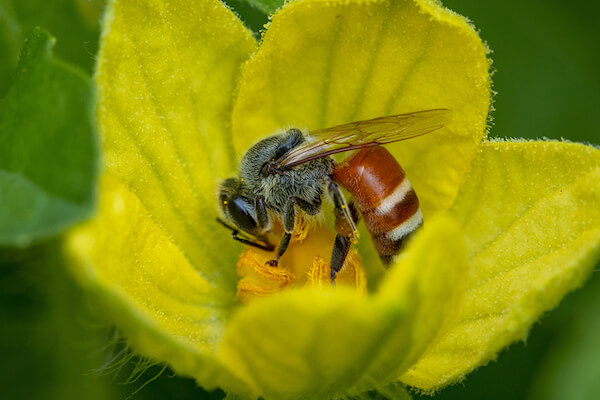 by Véto-pharma
by Véto-pharma A colony of red dwarf bees, Apis florea, was discovered in august for the first time in Europe, specifically in Malta. Originally from Asia, this invasive species could have severe consequences for local biodiversity and European bee populations. In addition to competing with native bees for resources, Apis florea carries pathogens that could further worsen the situation for European pollinators, which are already under threat.
A recent discovery in Europe has sparked serious concerns among biodiversity and beekeeping experts: the red dwarf bee, Apis florea, has been spotted for the first time in Malta. This invasive species, native to South and Southeast Asia, is known for its ability to colonize new territories due to human activities, such as maritime transport. The colony discovered near the port of Birżebbuġa in Malta was quickly eradicated, but researchers fear that other colonies might form in the region.

The danger posed by Apis florea is twofold. First, this species could compete with wild bees and our domestic bee, Apis mellifera, for resources such as pollen and nectar, which could weaken local bee populations already under pressure. Second, Apis florea carries many pathogens (viruses, mites, parasitic fungi, etc.) that could be transmitted to European bees, exacerbating the threats they face, already affected by diseases such as Varroa destructor and associated viruses.
Given that the Mediterranean climate is conducive to this species’ survival, researchers urge authorities to monitor it closely and to take swift eradication measures if necessary. The spread of this invasive species could disrupt local ecosystems and threaten honey production and essential pollination services for agriculture in Europe.
Scientists emphasize the urgency of increased vigilance, especially as climate change facilitates the geographic expansion of invasive species like Apis florea beyond their traditional range.
For more information, you can consult recent studies on Apis florea in the Journal of Apicultural Research publications:
 by Juan Molina
by Juan Molina  by Véto-pharma
by Véto-pharma  by Véto-pharma
by Véto-pharma As honey bee colonies confront escalating challenges, complicating the task of apiary management, a conglomerate of scientists from the University of Florida, the Agricultural Research Service-USDA, Louisiana State University, and